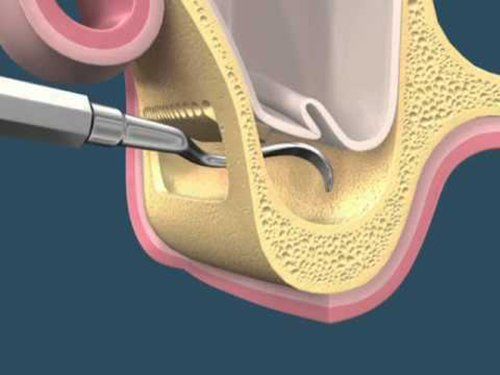
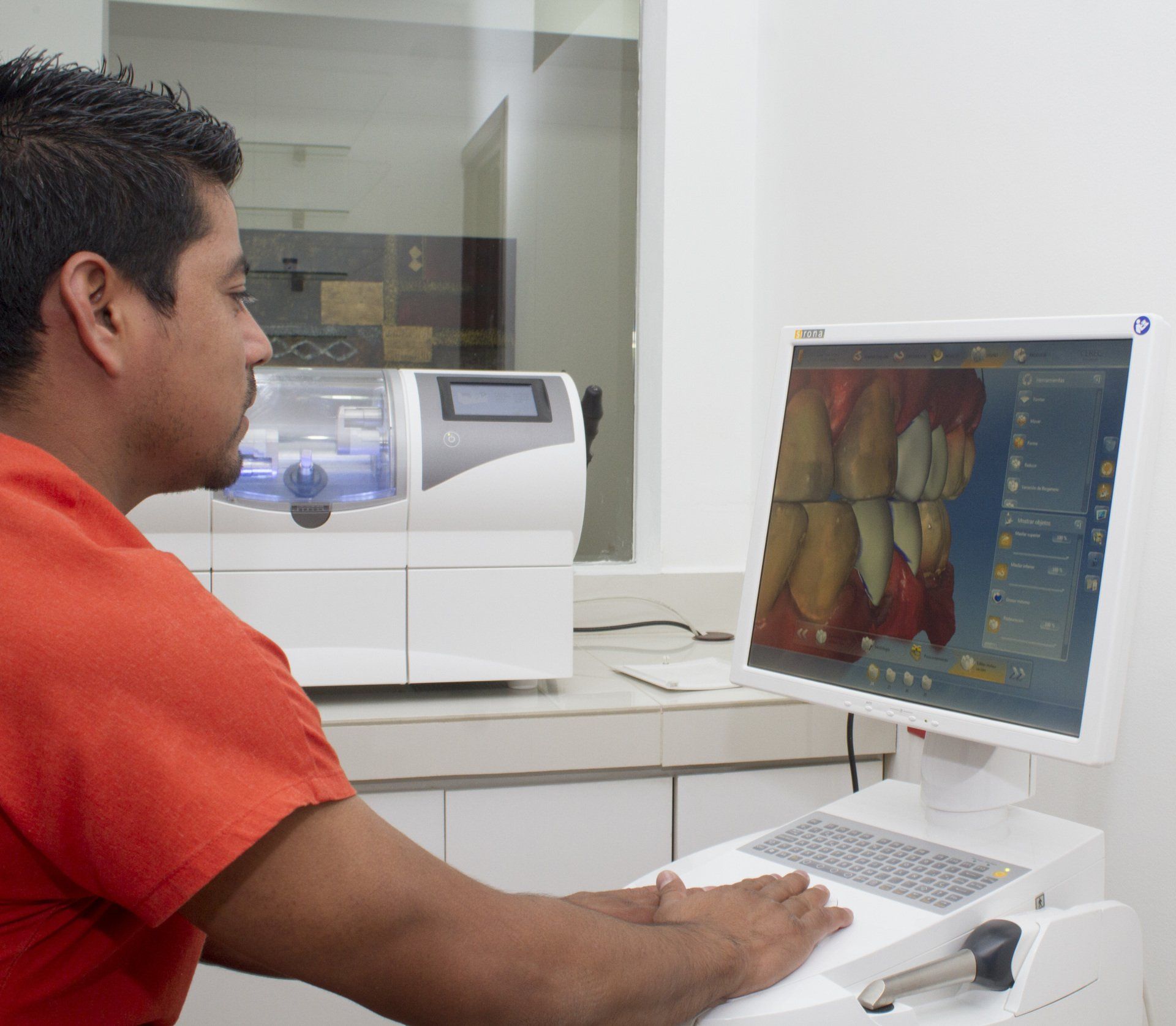

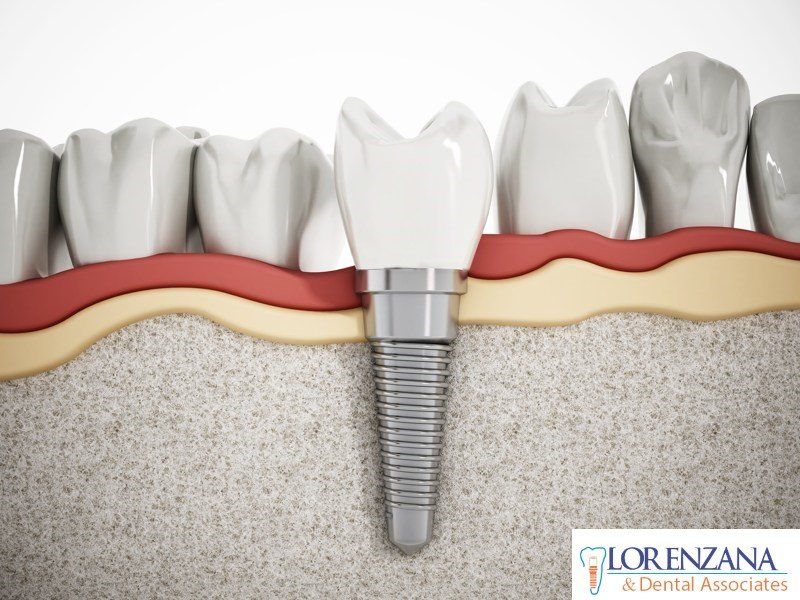
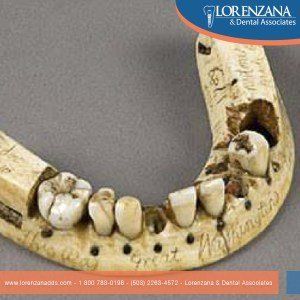
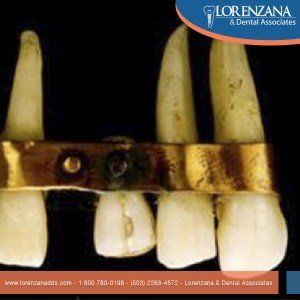
Ya para el año 600 a.C, entre las reliquias de Mayer se encontró una prótesis dental en la cual un par de dientes centrales habían sido reemplazados por dientes de madera.
Para el año 65 a.C., el marfil y la madera eran materiales comunes para dientes artificiales.
Las primeras dentaduras de las que tenemos conocimiento datan del siglo XV en Europa. Los dientes consistían en hueso/marfil esculpido o en dientes naturales obtenidos de cadáveres o donantes vivos. Estas prótesis no eran muy funcionales ya que eran incómodas y molestas. Estéticamente, brindaban resultados pobres ya que eran visiblemente conectadas por hilos de metal o seda.
Al principio del siglo XVII, la primera corona con cúspides apareció en Japón, aunque no sería sino hasta el final del siglo XVIII que el dentista Nicolas Dubois Chemant experimentaría con pasta mineral para crear la primera prótesis de porcelana.
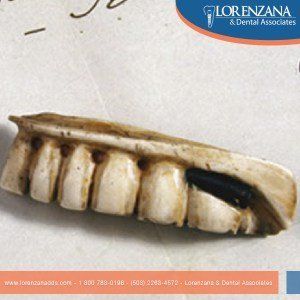
Luego aparecerían los dientes individuales apoyados por clavos a una base de plata u oro, pero su costo elevado llevó a que las personas probaran con nuevos materiales hasta que, a finales del siglo XIX, el caucho vulcanizado fue inventado. Este material se convertiría en la más importante bases para las prótesis hasta la llegada de las resinas acrílicas en el siglo XX.
Una de las prótesis más famosas perteneció a George Washington. Él sólo tenía ya un diente, pero una prótesis fue hecha para él con dientes tallados de marfil, así como dientes de hipopótamo y de otras personas. Esta prótesis le brindaba al Presidente de EE.UU. resultados altamente cosméticos.
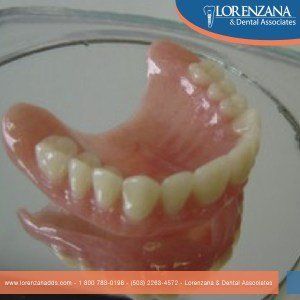
Se podría decir que las prótesis dentales modernas surgieron en 1904, cuando los equipos de fundición para usos dentales emergieron. Desde entonces han mejorado mucho los materiales para las prótesis y se ha logrado hacerlas capaces de imitar mucho mejor los movimientos maxilares. Hoy día, existen técnicas avanzadas de elaboración de prótesis en laboratorios utilizando tecnología CAD/CAM (Diseño Asistido por Computadora / Producción Asistida por Computadora, por sus siglas en inglés).
En 1980, W. Mörmann y M. Brandestini en la Universidad de Zurich desarrollaron un método para crear restauraciones dentales conocido como CEREC (siglas que en inglés significan: Restauración Económica de Cerámica Estética, o Reconstrucción de Cerámica). La tecnología y la odontología han continuado mejorando para proveer resultados que luzcan naturales y que sean funcionales y duraderos.

Nowadays, dental prostheses allow us to replace missing teeth with a truly aesthetic and natural appearance, giving back the lost function of the mouth; but it has not always been like this.
The first dental prosthesis of which we have records comes from the Etruscans all the way back in the VIII century B.C. and is preserved in the Dental School of Paris’ Museum. Etruscans used animal teeth to replace the missing pieces assembled over gold bands, which shows impressive skills.
By the year 600 B.C. the Mayer relics showed a prosthesis in which a pair of central teeth had been replaced by wooden teeth.
By the year 65 B.C., ivory and wood were common materials for artificial teeth.
The first dentures we have knowledge of are from Europe in the XV century. The teeth were either carved bone/ivory or natural teeth recovered from corpses or livings donors. These prostheses were not very functional as they were uncomfortable and annoying. Esthetically, they were poorly suited as they were visibly connected by metal or silk threads.
In the beginning of XVII century, the first crown with cuspids appeared in Japan, although it wouldn’t be until the ending of the XVIII century when dentist Nicolas Dubois Chemant would experiment with mineral paste to make the first porcelain prosthesis.

The next step would be individual teeth supported with nails to a silver or gold base, but their elevated cost led people to try with different materials. Finally, at the end of the XIX century, vulcanized rubber was invented. It would become the most important basis for prostheses until the arrival of the acrylic resins in the XX century.
One of the more famous prostheses belonged to George Washington. He had one single tooth, but a prosthesis was made for him out of hippopotamus, ivory and human teeth, with highly cosmetic results.

Basically, modern dental prostheses came to life in 1904, when dental casting machines emerged. Since then, there has been serious improvement in materials and prostheses have been made to imitate maxillary movement. Nowadays, there are advanced techniques for the production of prostheses in labs using technology called CAD/CAM (Computer-Aided Design/ Computer-Aided Manufacturing).
In 1980, W. Mörmann and M. Brandestini at the University of Zurich developed a method to create dental restorations known as CEREC (Chairside Economical Restoration of Esthetic Ceramics, or CEramic REConstruction). Technology and dentistry have continued to develop to provide natural-looking, functional, long-lasting results.




